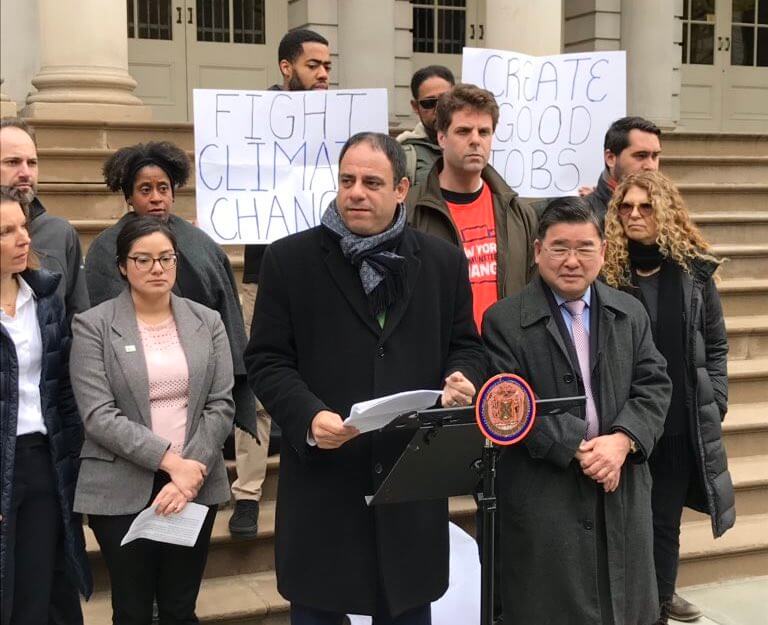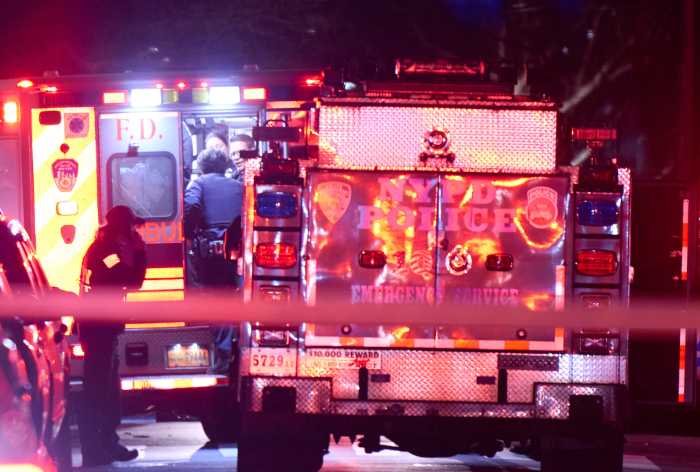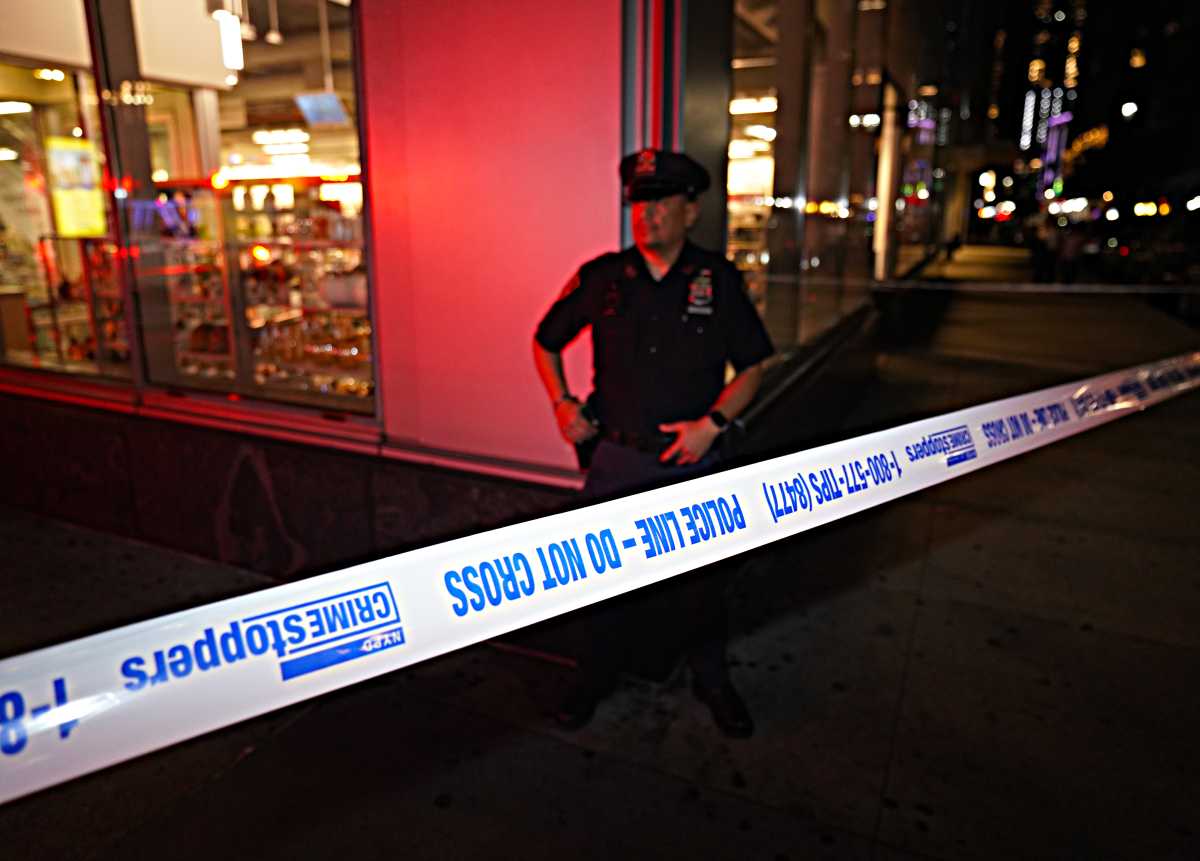Just before the White House released a massive new climate change study on Black Friday, Queens City Councilman Costa Constantinides took to the steps of City Hall to announce new legislation to significantly reduce greenhouse gas emissions from large buildings by 40 percent by 2030.
The 1,000-page report out of Washington, released on Nov. 23, finds that changes will “threaten the health and wellbeing of the American people” and that humans need more immediate and substantial global greenhouse emissions reductions in order to fight the worst potential effects.
President Trump frequently dismisses the idea of global warming and climate change, in fact, on Nov. 21 he tweeted, “Whatever happened to Global Warming?” One day earlier, on Nov. 20, Constantinides railed against the administration’s position on environmental issues.
“Climate change is no longer the looming threat of tomorrow — it is a clear and present danger today,” Constantinides said. “The Trump White House’s deconstructive stance on the environment means we are on our own. Our legislation answers that call to action, makes our air cleaner, and ensures the most vulnerable parts of the city are protected from the effects of climate change.”
The bill, which Constantinides will formally introduce at the next stated City Council meeting, mandates buildings 25,000 square feet or larger meet new standards on reducing greenhouse gas outputs. In many cases, these 50,000-plus structures must be retrofitted with new energy efficient technology as well as meet new operating procedures. This relatively small share of the city’s one million buildings account for an overwhelming 30 percent of building emissions.
“Buildings are responsible for two-thirds of the city’s greenhouse gas emissions,” Speaker Corey Johnson said. “Mandating energy efficiency for large buildings is a critical next step to combating climate change.” The Speaker also criticized the White House’s position on climate change.
“The time to fight climate change is now,” he said. “Because the current federal administration vehemently denies that climate change is real, it is up to us to lead the way to protect our environment.”
The legislation also recognizes the threats to rent-regulated buildings, where loopholes sometimes allow improvement costs to be passed on to the tenants. Properties 25,000 square feet or larger in this category would instead have to meet the retro-comissioning rules under Local Law 87, which currently only impact structures 50,0000 square feet or larger.
“We don’t have to look far to see the results of cities that have ignored their own carbon footprints,” City Councilman Peter Koo said. “New York City cannot afford to turn a blind eye to the harmful side effects of environmental pollution, and this bill looks to ensure large building emissions are fairly regulated.”
The bill targets buildings that emit the most carbon first, with better-performing properties complying with later in the decade. An Office of Building Energy Performance bill be set up under the Department of Buildings, which will oversee compliance as well as strategize how to meet goals for 2040 and 2050.
“Reducing emissions from buildings is the single most significant step New York City can take to meet its climate goals.,” New York League of Conservation Voters President Julie Tighe said. “Establishing emission reduction targets from 2022 through 2050 will help ensure that the residential and commercial sectors do their part to fight climate change and protect our environment.”
During his first year in office, Constantinides led the City Council to have New York reduce its carbon output 80 percent from its 2005 levels by 2050. He also passed legislation promoting renewable or cleaner energy sources including biodiesel, solar, wind, and geothermal power.

































